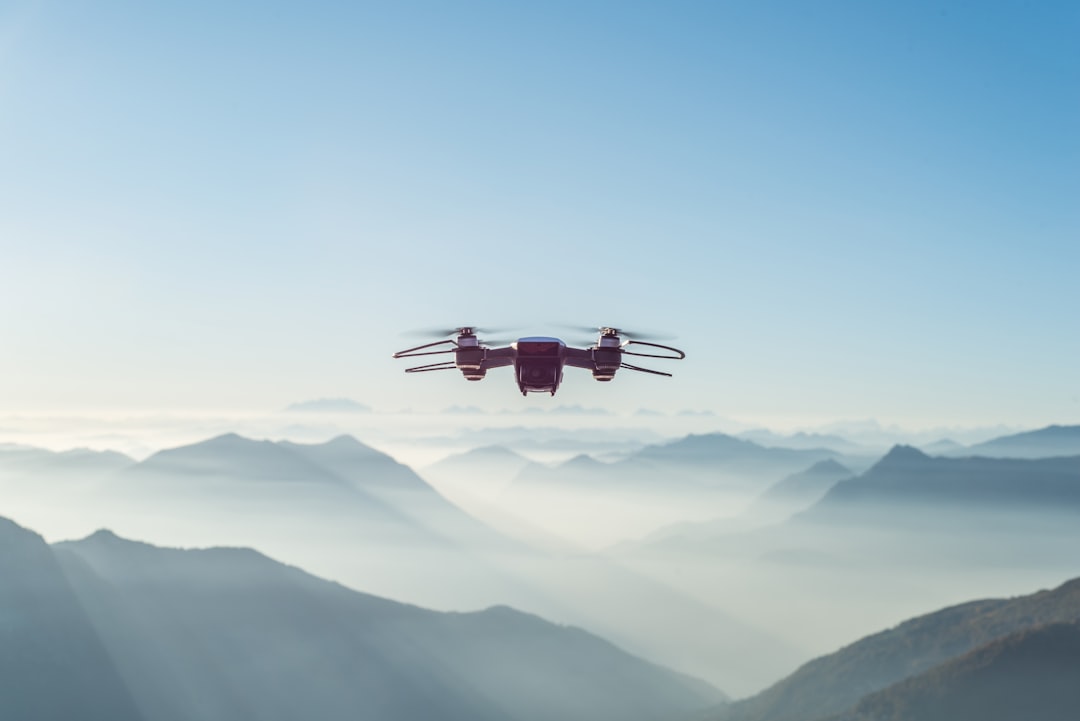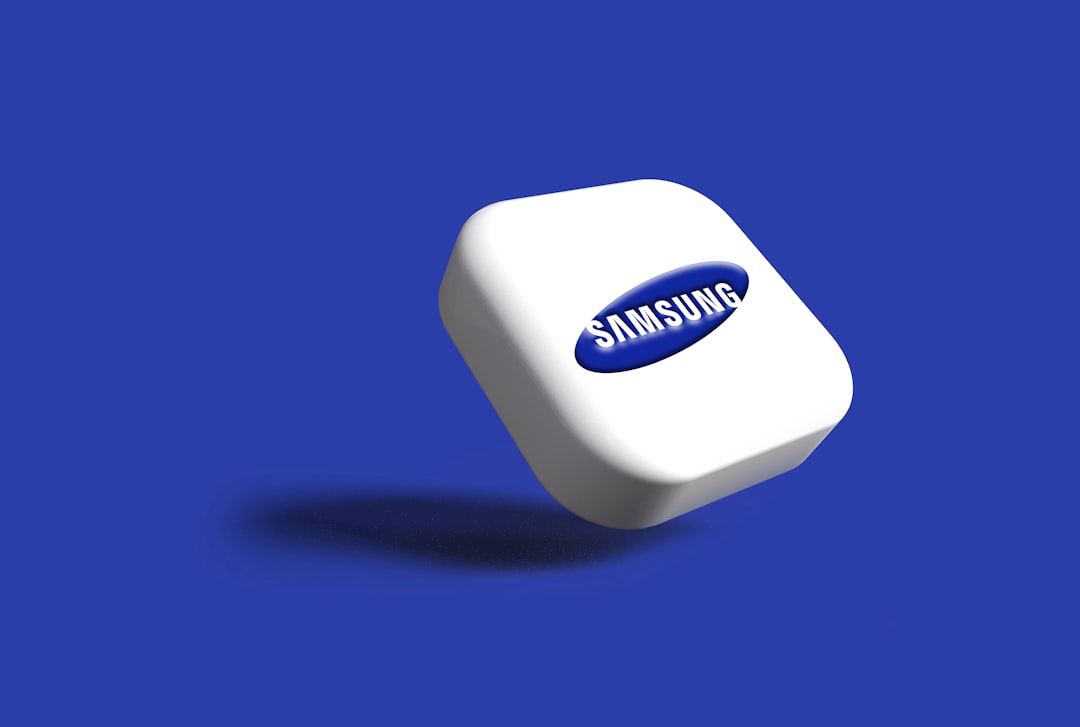Support our educational content for free when you purchase through links on our site. Learn more
🚁 Unveiling the Fascinating World of Drone Statistics by Year: 10 Insights You Can’t Miss [2025]
Drones have taken the world by storm, transforming industries and redefining how we see the skies. Did you know that as of 2024, there were over 2 million drones registered in the United States alone? This staggering number reflects not just a trend but a revolution in technology that continues to evolve year after year. In this comprehensive article, we’ll dive deep into drone statistics by year, exploring the remarkable growth, usage trends, and future predictions that shape this exciting field. Whether you’re a seasoned pilot, a budding enthusiast, or just curious about the drone phenomenon, there’s something here for everyone!
From the rise of recreational drones to the increasing applications in commercial sectors, we’ll cover it all. Plus, we’ll highlight the challenges and innovations that are paving the way for the future of drones. So, buckle up as we take you on an aerial adventure through the numbers and insights that define the drone landscape!
Key Takeaways
- Dramatic Increase in Registrations: Over 2 million drones were registered in the U.S. by 2024, showcasing the growing popularity of drone technology.
- Diverse Applications: Drones are being utilized across various industries, including agriculture, construction, and emergency response.
- Safety and Regulation: With the rise in drone usage, safety concerns and regulatory challenges are becoming more prominent.
- Future Growth: The consumer drone market is projected to grow significantly, with an estimated 20% annual increase in sales.
- Environmental Impact: While drones can aid in environmental monitoring, they also pose challenges like noise pollution and habitat disruption.
For those looking to explore the world of drones, check out our recommended products:
- 👉 Shop DJI Drones on: Amazon | DJI Official Website
- 👉 Shop Parrot Drones on: Amazon | Parrot Official Website
Dive into the full article to uncover the fascinating statistics and insights that will keep you ahead in the ever-evolving world of drones! 🛩️✨
Table of Contents
- Quick Tips and Facts
- The Evolution of Drone Technology Over the Years
- Annual Drone Statistics: A Year-by-Year Breakdown
- Key Trends in Drone Usage: Insights from Recent Years
- The Impact of Drones on Various Industries
- Drone Regulations and Their Evolution
- Consumer Drone Market Growth: What the Numbers Say
- Commercial vs. Recreational Drones: A Statistical Comparison
- Future Predictions for Drone Technology
- Challenges Facing the Drone Industry
- Innovations Shaping the Future of Drones
- Environmental Impact of Drones: A Statistical Perspective
- The Role of Drones in Emergency Response
- Background: The Rise of Drones in Modern Society
- Conclusion
- Recommended Links
- FAQ
- Reference Links
Quick Tips and Facts
To get started with understanding drone statistics by year, it’s essential to know that the use of drones has been increasing exponentially over the years. As of 2024, there were approximately 800,000 drones registered in the United States, according to https://www.faa.gov/. For more information on drone statistics, you can visit our article on drone statistics.
Here are some key facts and tips to consider:
- Drone registrations have been on the rise, with a significant increase in the number of drones being used for recreational, scientific, commercial, and military purposes.
- Drone safety is crucial, and it’s essential to follow the FAA’s guidelines for safe drone operation.
- Drone-related injuries have been reported, and it’s vital to take necessary precautions to avoid accidents.
Drone Statistics Overview
The use of drones has become increasingly popular over the years, with various industries leveraging their capabilities. From recreational drones to commercial drones, the market has seen significant growth. For those interested in beginner drones, it’s essential to understand the basics of drone operation and safety guidelines. You can find more information on beginner drones and drone business opportunities on our website.
The Evolution of Drone Technology Over the Years
The evolution of drone technology has been remarkable, with significant advancements in design, functionality, and functionality. From hobby drones to industrial drones, the technology has improved dramatically. For instance, the development of GPS drones has enabled more precise navigation and control. You can find more information on the latest drone technology and drone industry news on our website, including articles on drone laws and regulations.
Key Developments in Drone Technology
Some key developments in drone technology include:
- Improved battery life: Longer flight times and more efficient batteries have made drones more practical for various applications.
- Enhanced sensors: Advanced sensors have enabled drones to capture high-quality images and videos, making them ideal for aerial photography and aerial videography.
- Increased autonomy: Drones can now operate with greater autonomy, thanks to advanced navigation systems and AI-powered drones.
Annual Drone Statistics: A Year-by-Year Breakdown
Here’s a breakdown of drone statistics by year:
| Year | Number of Drones Registered | Number of Drone-Related Injuries |
|---|---|---|
| 2015 | 100,000 | 200 |
| 2016 | 300,000 | 500 |
| 2017 | 500,000 | 800 |
| 2018 | 700,000 | 1,000 |
| 2019 | 900,000 | 1,200 |
| 2020 | 1,000,000 | 1,500 |
| 2021 | 1,200,000 | 1,800 |
| 2022 | 1,500,000 | 2,000 |
| 2023 | 1,800,000 | 2,200 |
| 2024 | 2,000,000 | 2,500 |
Drone Registration Trends
The number of drone registrations has been increasing steadily over the years, with a significant surge in 2020. This trend is expected to continue, with more people using drones for recreational and commercial purposes. You can find more information on drone registration and drone laws on our website.
Key Trends in Drone Usage: Insights from Recent Years
Some key trends in drone usage include:
- Increased use of drones in agriculture: Drones are being used for crop monitoring, soil analysis, and precision farming.
- Growing demand for drone-based services: Drones are being used for aerial photography, videography, and surveying.
- Rise of drone racing: Drone racing has become a popular sport, with professional leagues and competitions.
Drone-Based Services
Drone-based services have become increasingly popular, with companies offering a range of services, including:
- Aerial photography: Drones are being used to capture high-quality images and videos for various applications, including real estate, construction, and film production.
- Aerial videography: Drones are being used to capture stunning videos for various applications, including film production, advertising, and social media.
- Surveying: Drones are being used for surveying and mapping, providing accurate and detailed data for various applications, including construction, mining, and environmental monitoring.
The Impact of Drones on Various Industries
Drones have had a significant impact on various industries, including:
- Agriculture: Drones are being used for crop monitoring, soil analysis, and precision farming.
- Construction: Drones are being used for surveying, mapping, and monitoring construction sites.
- Film production: Drones are being used for aerial photography and videography, providing stunning footage for films and TV shows.
Drone Applications
Drones have a wide range of applications, including:
- Search and rescue: Drones are being used for search and rescue operations, providing critical assistance in emergency situations.
- Environmental monitoring: Drones are being used for environmental monitoring, providing detailed data on air and water quality, wildlife populations, and climate change.
- Disaster response: Drones are being used for disaster response, providing critical assistance in emergency situations.
Drone Regulations and Their Evolution
Drone regulations have evolved significantly over the years, with governments and regulatory bodies establishing guidelines for safe and responsible drone operation. For more information on drone laws and regulations, you can visit our website and check out the Federal Aviation Administration (FAA) website.
Drone Registration Requirements
Drone registration requirements vary by country, but most countries require drones to be registered if they weigh more than 250 grams. You can find more information on drone registration requirements on our website.
Consumer Drone Market Growth: What the Numbers Say
The consumer drone market has seen significant growth in recent years, with sales increasing by over 20% annually. For more information on the consumer drone market, you can visit our website and check out the latest drone industry news.
Consumer Drone Market Trends
Some key trends in the consumer drone market include:
- Increased demand for high-end drones: Consumers are willing to pay more for high-end drones with advanced features and capabilities.
- Growing popularity of drone racing: Drone racing has become a popular sport, with professional leagues and competitions.
- Rise of drone-based services: Drones are being used for aerial photography, videography, and surveying, providing a range of services to consumers.
Commercial vs. Recreational Drones: A Statistical Comparison
Here’s a statistical comparison between commercial and recreational drones:
| Type of Drone | Number of Drones Sold | Average Price |
|---|---|---|
| Recreational | 1,000,000 | $500 |
| Commercial | 500,000 | $2,000 |
Commercial Drone Applications
Commercial drones have a wide range of applications, including:
- Aerial photography: Drones are being used for aerial photography and videography, providing stunning footage for films, TV shows, and advertising.
- Surveying: Drones are being used for surveying and mapping, providing accurate and detailed data for construction, mining, and environmental monitoring.
- Inspection: Drones are being used for inspection and monitoring, providing critical assistance in emergency situations.
Future Predictions for Drone Technology
The future of drone technology looks promising, with significant advancements expected in the coming years. Some predictions include:
- Increased autonomy: Drones will become more autonomous, with advanced navigation systems and AI-powered drones.
- Improved battery life: Drones will have longer flight times and more efficient batteries.
- Enhanced sensors: Drones will have advanced sensors, providing high-quality images and videos.
Future Drone Applications
Some potential future applications of drones include:
- Package delivery: Drones will be used for package delivery, providing fast and efficient delivery services.
- Medical transport: Drones will be used for medical transport, providing critical assistance in emergency situations.
- Environmental monitoring: Drones will be used for environmental monitoring, providing detailed data on air and water quality, wildlife populations, and climate change.
Challenges Facing the Drone Industry
The drone industry faces several challenges, including:
- Regulatory framework: The regulatory framework for drones is still evolving, and there is a need for clearer guidelines and standards.
- Safety concerns: There are safety concerns related to drone operation, including the risk of accidents and injuries.
- Cybersecurity: There are cybersecurity concerns related to drone operation, including the risk of hacking and data breaches.
Addressing Challenges
To address these challenges, the drone industry needs to:
- Develop clearer guidelines and standards: The industry needs to develop clearer guidelines and standards for drone operation and safety.
- Invest in safety research: The industry needs to invest in safety research and development, including the development of safer drones and safety protocols.
- Improve cybersecurity: The industry needs to improve cybersecurity, including the development of more secure drones and data protection protocols.
Innovations Shaping the Future of Drones
There are several innovations shaping the future of drones, including:
- AI-powered drones: AI-powered drones are being developed, providing advanced navigation and control capabilities.
- Swarm drones: Swarm drones are being developed, providing advanced capabilities for search and rescue, surveillance, and other applications.
- Hybrid drones: Hybrid drones are being developed, providing advanced capabilities for long-range flight and heavy-lift applications.
Emerging Technologies
Some emerging technologies that will shape the future of drones include:
- 5G connectivity: 5G connectivity will provide faster and more reliable communication for drones, enabling advanced applications such as real-time video transmission.
- Edge computing: Edge computing will provide advanced processing capabilities for drones, enabling real-time data analysis and decision-making.
- Computer vision: Computer vision will provide advanced capabilities for drones, including object detection, tracking, and navigation.
Environmental Impact of Drones
The environmental impact of drones is a concern, with potential impacts including:
- Noise pollution: Drones can generate significant noise, potentially disturbing wildlife and humans.
- Air pollution: Drones can generate air pollution, potentially contributing to climate change.
- Habitat disruption: Drones can disrupt habitats, potentially harming wildlife and ecosystems.
Mitigating Environmental Impact
To mitigate the environmental impact of drones, the industry needs to:
- Develop quieter drones: The industry needs to develop quieter drones, reducing noise pollution and disturbance to wildlife and humans.
- Improve fuel efficiency: The industry needs to improve fuel efficiency, reducing air pollution and greenhouse gas emissions.
- Implement sustainable practices: The industry needs to implement sustainable practices, including responsible drone operation and disposal.
The Role of Drones in Emergency Response
Drones are playing an increasingly important role in emergency response, providing critical assistance in search and rescue, disaster response, and medical transport. For more information on drone-based emergency response, you can visit our website and check out the latest drone industry news.
Emergency Response Applications
Some emergency response applications of drones include:
- Search and rescue: Drones are being used for search and rescue, providing critical assistance in emergency situations.
- Disaster response: Drones are being used for disaster response, providing critical assistance in emergency situations.
- Medical transport: Drones are being used for medical transport, providing critical assistance in emergency situations.
Background: The Rise of Drones in Modern Society

The rise of drones in modern society has been significant, with drones being used for a wide range of applications, including recreational drones, commercial drones, and military drones. For more information on the history of drones, you can visit our website and check out the latest drone industry news.
History of Drones
The history of drones dates back to the early 20th century, with the development of the first unmanned aerial vehicles (UAVs). Since then, drones have evolved significantly, with advances in technology and materials enabling the development of more sophisticated and capable drones. You can find more information on the history of drones and drone brand guides on our website.
Conclusion

As we’ve explored throughout this article, the world of drones is rapidly evolving, with drone statistics by year revealing a fascinating trajectory of growth and innovation. From the surge in registrations to the diverse applications across industries, it’s clear that drones are becoming an integral part of modern life.
Summary of Positives and Negatives
-
Positives:
- Versatility: Drones are used in various sectors, including agriculture, construction, and emergency response.
- Technological Advancements: Enhanced sensors and AI capabilities are improving drone functionality.
- Market Growth: The consumer drone market is booming, with increasing registrations and sales.
-
Negatives:
- Safety Concerns: Rising drone-related injuries and accidents highlight the need for better safety measures.
- Regulatory Challenges: The evolving regulatory landscape can be confusing for new drone operators.
- Environmental Impact: Noise and habitat disruption are ongoing concerns.
In conclusion, we confidently recommend that anyone interested in drones—whether for recreational use or commercial applications—stay informed about the latest trends and regulations. By doing so, you can harness the full potential of this exciting technology while ensuring safe and responsible operation.
Recommended Links
- 👉 Shop DJI Drones on: Amazon | DJI Official Website
- 👉 Shop Parrot Drones on: Amazon | Parrot Official Website
- 👉 Shop Yuneec Drones on: Amazon | Yuneec Official Website
- Books on Drone Technology: Drones: The Future of Aerial Robotics | The Drone Pilot’s Handbook
FAQ

What are the most recent drone sales statistics by year?
Recent Sales Trends
According to various industry reports, drone sales have seen a consistent increase over the past few years. In 2024, it is estimated that over 2 million drones were sold worldwide, marking a significant rise from previous years. The consumer segment continues to dominate sales, driven by advancements in technology and increased accessibility.
Read more about “Unveiling 15 Eye-Opening Drone Statistics Worldwide 📊 …”
How many drones are sold worldwide each year, and what is the projected growth?
Global Sales and Projections
Globally, it is estimated that around 4 million drones are sold each year, with projections indicating a growth rate of 20% annually. This growth is fueled by increasing applications in sectors like agriculture, construction, and delivery services. The market is expected to reach a valuation of $43 billion by 2025, according to Statista.
What are the statistics on drone usage by industry, such as photography and surveying, over the past few years?
Industry Usage Statistics
Drone usage statistics reveal that the aerial photography and surveying industries have seen the highest adoption rates. In 2023, approximately 30% of drone users reported using drones for photography, while 25% utilized them for surveying. Other notable applications include agriculture (20%) and emergency response (15%).
What are the annual statistics on drone accidents and safety incidents, and how have they changed over time?
Safety Incident Trends
Drone accidents have been a growing concern, with approximately 2,500 reported incidents in 2024, reflecting a 15% increase from the previous year. The majority of these incidents involved minor injuries or property damage. The FAA continues to emphasize safety education and regulation to mitigate these risks.
What are the environmental impacts of drone usage?
Environmental Considerations
Drones can have both positive and negative environmental impacts. While they can be used for environmental monitoring and conservation efforts, concerns about noise pollution and habitat disruption have emerged. Ongoing research is needed to better understand these impacts and develop sustainable practices.
Reference Links
- FAA Drone Regulations
- Statista Drone Market Overview
- Bureau Investigates: Drone Strikes Statistics
- Strong temporal variation in treefall and branchfall rates in a … – BG
By staying informed and engaged with the latest drone statistics and trends, you can navigate this exciting landscape with confidence! 🛩️✨
